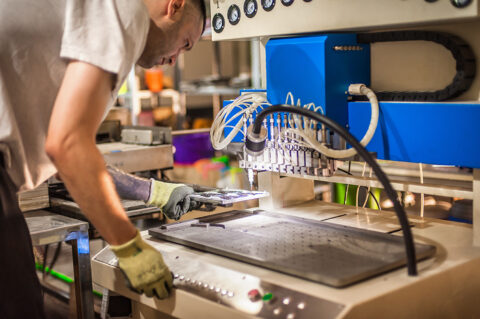In a special Augmented Ops season five episode, host Natan Linder sits down with Liz Reynolds, an expert on the American workforce and manufacturing research, to discuss the key themes and challenges emerging from a busy spring of events focused on changing the American industrial base. From the Hill Valley Forum to the Industry Studies Association (ISA) at MIT, and from MIT’s launch of the Initiative for New Manufacturing to Reindustrialize 2.0 in Detroit, the conversation centered around the future of U.S. manufacturing and the steps needed to reindustrialize the nation.
Reynolds highlights the core themes that have gained traction over the past year, including the implementation of AI in operations, the Department of Defense’s trillion-dollar budget for 2026, and the significant hurdle of technology adoption at scale for the U.S. She also points out the headwinds from tariffs starting to show signs of impact on the manufacturing sector.
“You cannot turn to any piece of the Manufacturing agenda for this country and not see a direct line to our R&D capabilities. Yeah, in bioindustrial, in quantum in critical minerals, the way we win is we are gonna be innovating for the long term.”
While there is consensus on the importance of manufacturing for national and economic security, Reynolds notes the disagreements on how to build industrial capacity, whether through tax incentives or tariffs. She also highlights the challenges faced by the U.S., including workforce shortages, technology adoption among small and medium-sized enterprises (SMEs), and finding capital for scale-up.
Linder and Reynolds delve into the labor productivity equation and the challenges in implementing technology, with China having an advantage in labor arbitrage, automation experience, and scale. To compete, the U.S. needs an ecosystem to increase industrial capacity, and this may lead to a trend of supply chain relocation.
China has about a hundred million workers in Manufacturing. We have 13 million in the US. Yeah, so that’s seven x. We graduate 70,000 engineers a year. They graduate 600,000 a year. Yeah. So, we’ve gotta be very strategic very focused.
The conversation also touches on the positive signs and progress in rebuilding manufacturing capabilities, such as semiconductor manufacturing efforts and demand response from companies like Tesla and Apple. States are also taking steps to balance labor, environmental, and national security interests.
Reynolds emphasizes the direct link between research and development (R&D) capabilities and success in various manufacturing sectors, expressing concern about cuts that attack innovation capabilities. As the U.S. looks forward and takes action to reindustrialize, she notes that the seeds planted during the spring events are ready for growth, and the focus should be on building new capabilities rather than simply reshoring.
Collaborating with allies and partners to rebuild industries and exploring the potential for a Pan-American approach to operations and manufacturing are also discussed as strategies for reindustrializing the nation.
As the U.S. navigates the challenges and opportunities of reindustrializing in 2025, the insights shared by Liz Reynolds and Natan Linder provide a roadmap for the future of American manufacturing. By embracing innovation, investing in R&D, and fostering collaboration, the nation can position itself for success in the global manufacturing landscape.
To listen to the full episode and explore more insights on the future of manufacturing and industrial technology, tune in to the Augmented Ops podcast on LinkedIn, YouTube, or wherever you listen to your podcasts.




